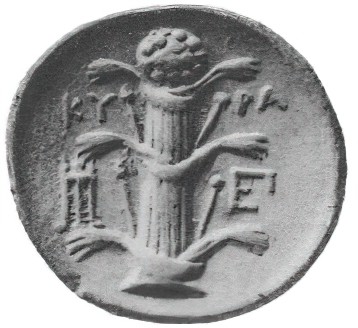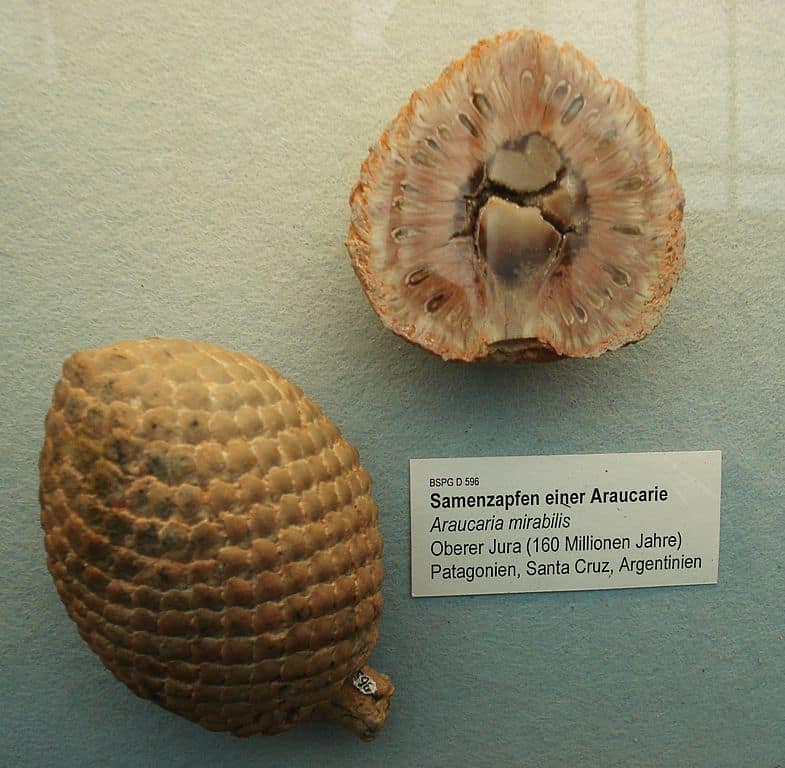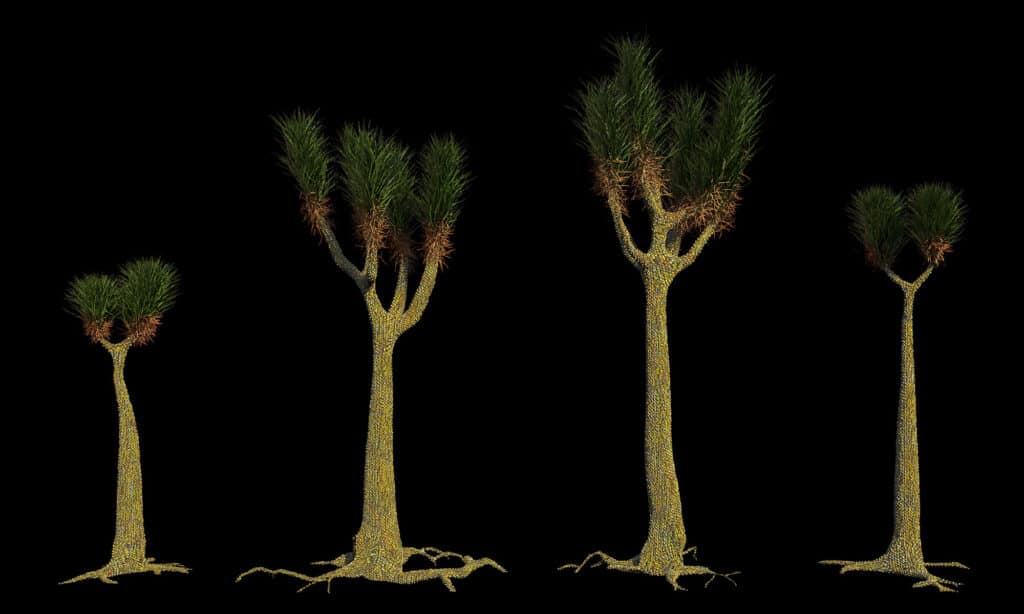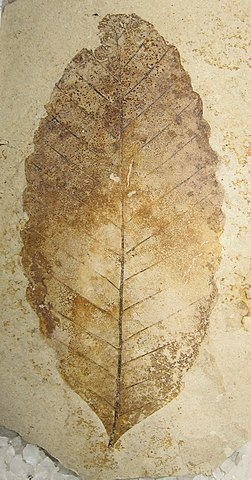Plants, like animals, have gone extinct over time for a myriad of reasons. Some have gone extinct recently, while others went extinct in the distant past. Around 571 recorded plants have disappeared since the 1770s.
Plants left the oceans about 400 million years ago and swept across terrestrial environments. To do this, they evolved in spectacular ways that we’ll find both familiar and strange.
As modernization and climate change started, plants have been going extinct at a much higher rate than they have at other points in history. That isn’t to say that members of early history didn’t kill plants; humanity has been taking a toll on the ecosystem since Homo sapiens wandered out of Africa about 10,000 years ago.
What are 8 extinct plants that once grew on the planet? We’ll take a look at some historical extinctions as well as some ancient plant life.
8 Extinct Plants
These are 8 of the extinct plants that lived on earth:
- Silphium
- Araucaria Mirabilis
- Sigillaria
- Tulare Saltbush
- Chile Sandalwood Tree
- Fagopsis Longifolia
- Wynberg Conebush
- Cooksonia
1. Silphium

The harvesting of Silphium sap drove it to extinction by 54 C.E.
©From 1889 edition of _Principal Coins of the Ancients_, plate 35 / public domain – License
Silphium was from the Roman city of Cyrene, and its sap was prized. The plant itself had small yellow flowers and wasn’t famous for its appearance. The smelly sap was so valuable that it was worth its weight in gold.
Its stalk was cooked, the root was eaten raw, and it was believed it made the meat from livestock taste better. Both perfume and the precious edible sap were made from its blossom.
Silphium was also used as a cure-all for ailments, birth control, and as an aphrodisiac. Specifically, it was used to cure quartan fever, which is a form of malaria.
It was popular antiquity that it was shown on Greek coins, and it made the Roman city of Cyrene in Libya one of the most prosperous cities. The sheep that humans raised leveled fields of silphium.
Farmers in antiquity tried to farm silphium but with no success. It’s believed the problem was that the seeds weren’t exposed to light to start the germination process and were instead just placed into the ground to rot.
Pliny the Elder reported that the last known stalk was given to Nero around 54-68 CE. It’s probably extinct though some people think it may still be around.
2. Araucaria Mirabilis

Araucaria mirabilis was a coniferous tree that was wiped out in a volcanic eruption.
©Ghedoghedo / CC BY-SA 3.0 – License
This tree grew over 125 feet tall. It was a coniferous tree that was wiped out in a volcanic eruption. It went extinct in its home of Patagonia, Argentina, about 160 million years ago.
The eruption happened when the pinecones on the trees were mature, so locals in the area have been finding and keeping them for centuries.
3. Sigillaria

While Sigillara looked like trees, they were huge mosses.
©iStock.com/dottedhippo
We currently make fossil fuels out of this plant. Its heydey was the late Carboniferous Period which was approximately 300 million years ago. It existed worldwide.
It liked peat swamps and released spores to reproduce. Its spores emanated from cones hanging off of its branches. Photosynthesis probably occurred in its trunk, so it was most likely all green.
It was a huge moss even though it resembled a Joshua tree. Sometimes its trunk forked, and it wasn’t made of wood. It had scales made of leaves instead of bark. It was very tall at about 100 feet.
It grew fast and died young. Death most likely occurred after reproduction.
4. Tulare Saltbush (Atriplex tularensis)

Tulare saltbush used to thrive in the alkaline salt pans in the southern Central Valley.
©Frederick Vernon Coville (1867–1932) / public domain – License
Also known as the Bakersfield saltbush, agriculture drove this plant to extinction around 1991. It was an annual herb that relied on inland lakes and aquifers for water which was drained as the Central Valley of California was developed.
It used to thrive in the alkaline salt pans in the southern Central Valley. Some think it still might be hanging around undetected; however, any efforts to locate it have failed.
It grew about 2.5 feet tall with tough and scaly leaves and stems. It varied from reddish to greenish to gray.
5. Chile Sandalwood Tree (Santalum Fernandezianum)
This tree was lost because it was overharvested due to its fragrant wood. It was last seen on the South Pacific island of Robinson Crusoe in 1908.
In 1750, the Spanish colonized the island and opened the island to commerce. While it relies on tourism today, it previously relied heavily on seals and Chile sandalwood tree products. This decimated both species and led one to extinction.
6. Fagopsis Longifolia

Fagopsis longifolia lived during the Eocene Epoch.
©Kevmin / CC BY-SA 3.0 – License
Fagopsis Longifolia is an extinct plant found in the Florrisant Formation near Colorado Springs, CO. It lived during the Eocene Epoch, which was about 56-40 million years ago.
It existed in the ancient Florrisant lake that no longer exists. Before the lake vanished, however, it abundantly fossilized this plant, and it is readily found around the area.
Its existence in this area shows that the weather used to be moister. It was a different climate than what is present today.
7. Wynberg Cone Bush (Leucadendron Grandiflorum)
This plant is up for un-extinction because scientists have reconstructed its DNA. The driving force for this is to bring the plant’s scent back to life. This plant lived in South Africa.
Wynberg cone bushes have been extinct since 1806. It has the reputation of being the earliest documented extinction in South Africa, although this is almost impossible to verify.
8. Cooksonia

Cooksonia was most likely the first vascular plant on the planet.
©Smith609 / CC BY 3.0 – License
These were semi-aquatic plants, and they were probably the first to sport a stem. They lived along coastlines and were one of the first terrestrial plants on the planet. They appeared over 400 million years ago.
While they’re found worldwide, they’re most common in Britain. Their branches were tipped with a single capsule filled with spores which they used to reproduce. They had structures that somewhat resembled leaves, but they didn’t have true leaves.
They were most likely among the first vascular plants, which means they were the first to develop a system of transporting water throughout the entire plant.
The photo featured at the top of this post is © iStock.com/dottedhippo
Thank you for reading! Have some feedback for us? Contact the AZ Animals editorial team.






